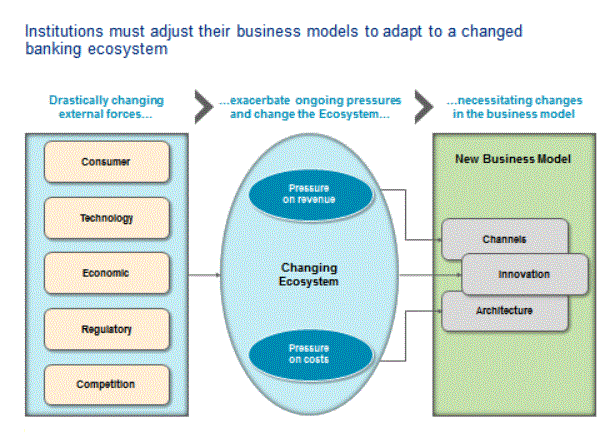No Bank Is an Island
Adapting Retail Bank Business Models to Thrive in a Rapidly Changing Ecosystem
Abstract
Retail banking in North America and around the world is undergoing a profound generational change.
Pressure from outside sources — the economy, regulation, competitors new and old — has ratcheted to a fever pitch, while consumer demands and technology solutions are accelerating the need for new products, services and delivery mechanisms. Nimble new entrants challenge banks at the margin, and, increasingly, the core. These forces are reshaping the retail banking system in unprecedented ways.
Against this backdrop, banks face the ever-present pressures of increasing revenue and reducing cost. To execute against these mandates they must focus on their customers, improve on how they organize people, process and technology to deliver to those customers, and decide the level of innovation appropriate to their individual strategy.
The most fundamental change, and the one that will require the biggest shift in mindset, is the increased importance of the overall retail banking ecosystem to individual banks. Simultaneously opportunity and threat, banks’ web of connections banks with vendors, customers and partners is more complex and more crucial than ever before. Navigating through, and profiting from, this ecosystem will necessitate fundamental changes in bank business models.
Celent examines these forces in detail and recommends that banks respond by making a essential change in mindset and behavior: recognize, and behave as if, they are but a part of a financial services ecosystem. By capitalizing on their relationships and bringing customers value from partners, they will strengthen the customer relationships that are the foundation of their business.


